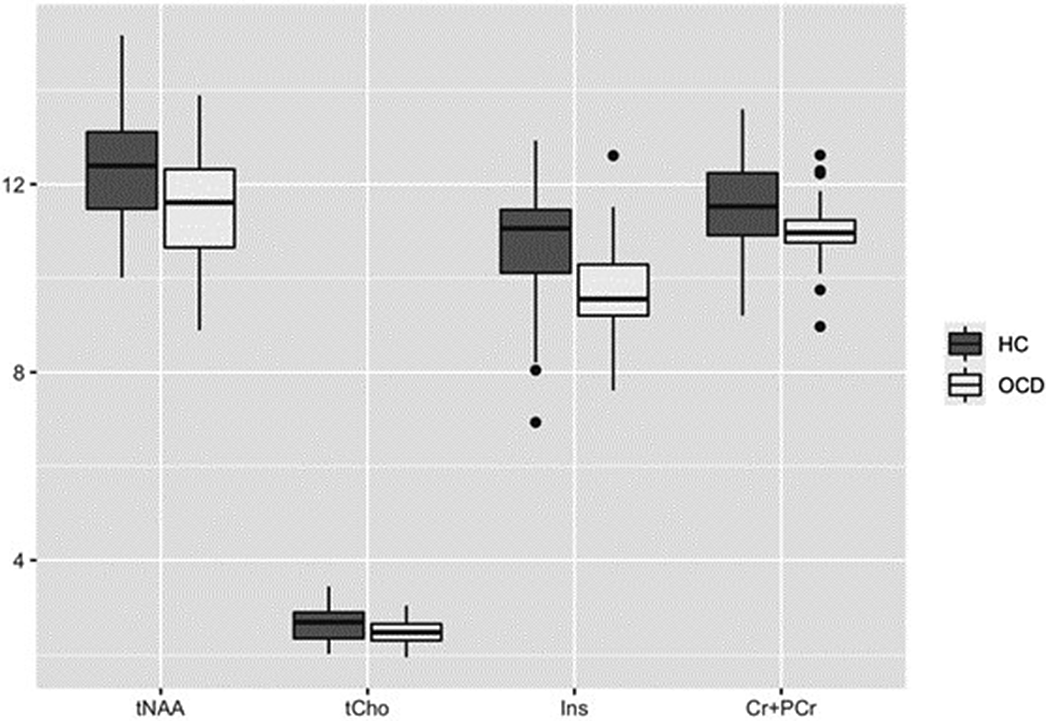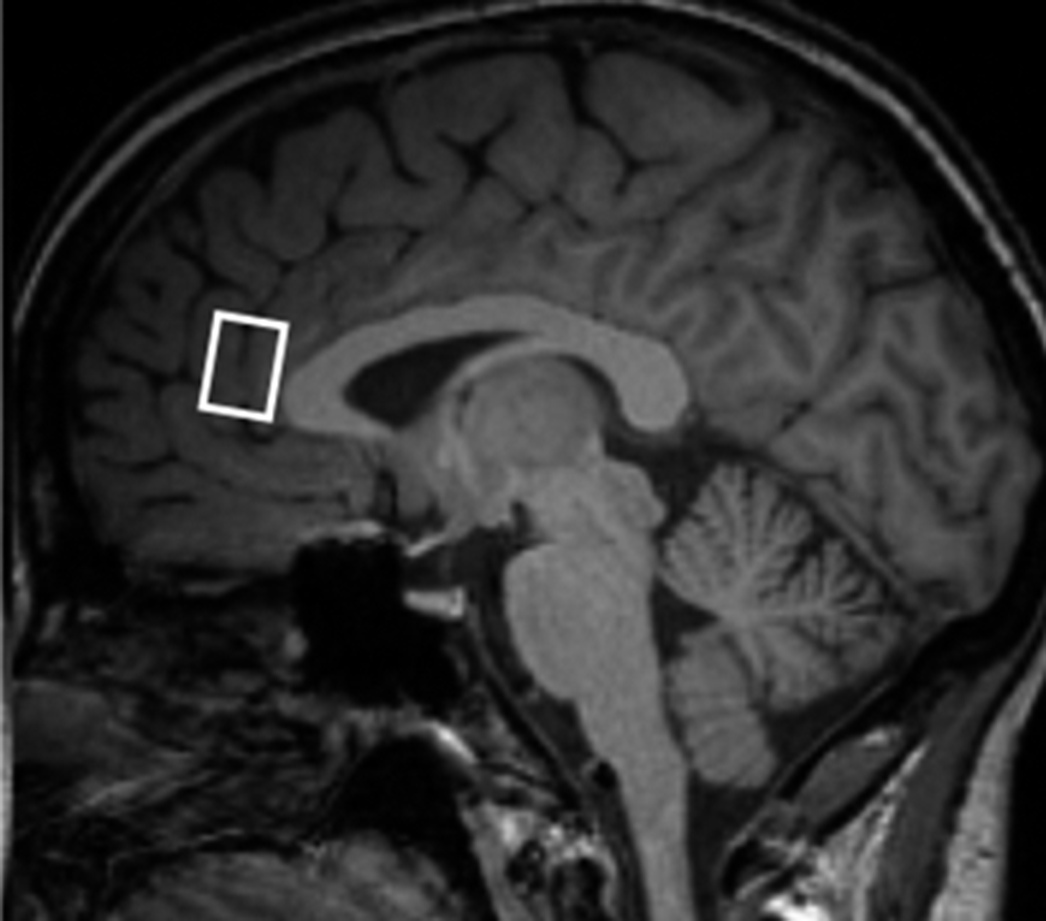No CrossRef data available.
Article contents
1H-MRS of the anterior cingulate cortex in obsessive-compulsive disorder: metabolic abnormalities in pgACC - controlled study
Published online by Cambridge University Press: 19 July 2023
Abstract
Obsessive-compulsive disorder (OCD) is connected with increased activity in cortico-striatal-thalamic-cortical (CSTC) loop. The anterior cingulate cortex (ACC) is a part of this loop and plays a role in error detection and monitoring and processing of conflicting information, core OCD clinical signs. This area also contains a high density of Von Economo neurons. Biochemistry in this area is closely connected with the pathophysiology of OCD.
Decreased concentrations of total N-acetylaspartate (tNAA) have been reported in ACC in patients with OCD compared to healthy controls (HC), with increase after successful treatment. Findings by other metabolites: choline-containing compounds (tCho), total creatine (tCr) and myo-inositol are not consistent. Differences in levels of tNAA, tCho, tCr would correlate with the severity of symptoms measured by Y-BOCS. In the comparison in the subgroup of patients with/ without medication, there will be differences in levels of metabolites.
54 patients diagnosed with OCD according to ICD-10 and DSM-IV criteria, and 54 HC matched for age and sex were included in the study. They underwent MRI and MR Spectroscopy on a 3T Magnetom Prisma scanner (Siemens, Germany) equipped with a 64-channel volume head coil (Fig. 2). After spectral quality control, 28 OCD and 28 HC subjects were included in the statistical analysis. OCD subjects were interviewed using the Y-BOCS to evaluate the severity of the symptoms. Patients enrolled in the study were without medication at least 5 days before MRI or on a stable dosage of SSRI antidepressants. To assess the intergroup differences Wilcoxon Rank Sum test or Kruskal-Wallis test was used as appropriate. The correlation between metabolite levels and clinical characteristics was assessed by Spearman’s rank correlation coefficient. The statistics were calculated using R, version 4.1.1.
We found no differences in levels of tNAA in ACC in OCD vs. HC (p=0,21; see Tab.1, Fig.1). We found significantly increased level of tCho, tCr and Ins in OCD vs. HC (p=0,03; p=0,004 resp.; p=0,017 resp.). tCr levels corelated negatively with YBOCS compulsions subscale (p=0,046; cor=-0,38). tCho levels showed a trend to negative correlation with Y-BOCS compulsions subscale (p=0,067; cor=-0,35). Analysis on the subgroup with (13 subjects, 46,43 %) and without (13 subjects, 46,43 %) stable SSRI medication did not reveal significant differences.
Image:

Image 2:

Our study found difference in ACC by OCD patients compared to HC, mainly increased tCho, tCr and Ins. Also, the study shows a significant correlation between the severity of compulsions and tCr levels. We can see this trend also in the correlation of the tCho and Y-BOCS compulsions subscale. Similar tNAA level by OCD and HC groups could indicates correctly adjusted medication or stable state by enrolled patients.
None Declared
- Type
- Abstract
- Information
- European Psychiatry , Volume 66 , Special Issue S1: Abstracts of the 31st European Congress of Psychiatry , March 2023 , pp. S105 - S106
- Creative Commons
- This is an Open Access article, distributed under the terms of the Creative Commons Attribution licence (https://creativecommons.org/licenses/by/4.0/), which permits unrestricted re-use, distribution, and reproduction in any medium, provided the original work is properly cited.
- Copyright
- © The Author(s), 2023. Published by Cambridge University Press on behalf of the European Psychiatric Association



Comments
No Comments have been published for this article.